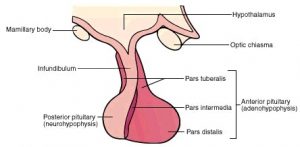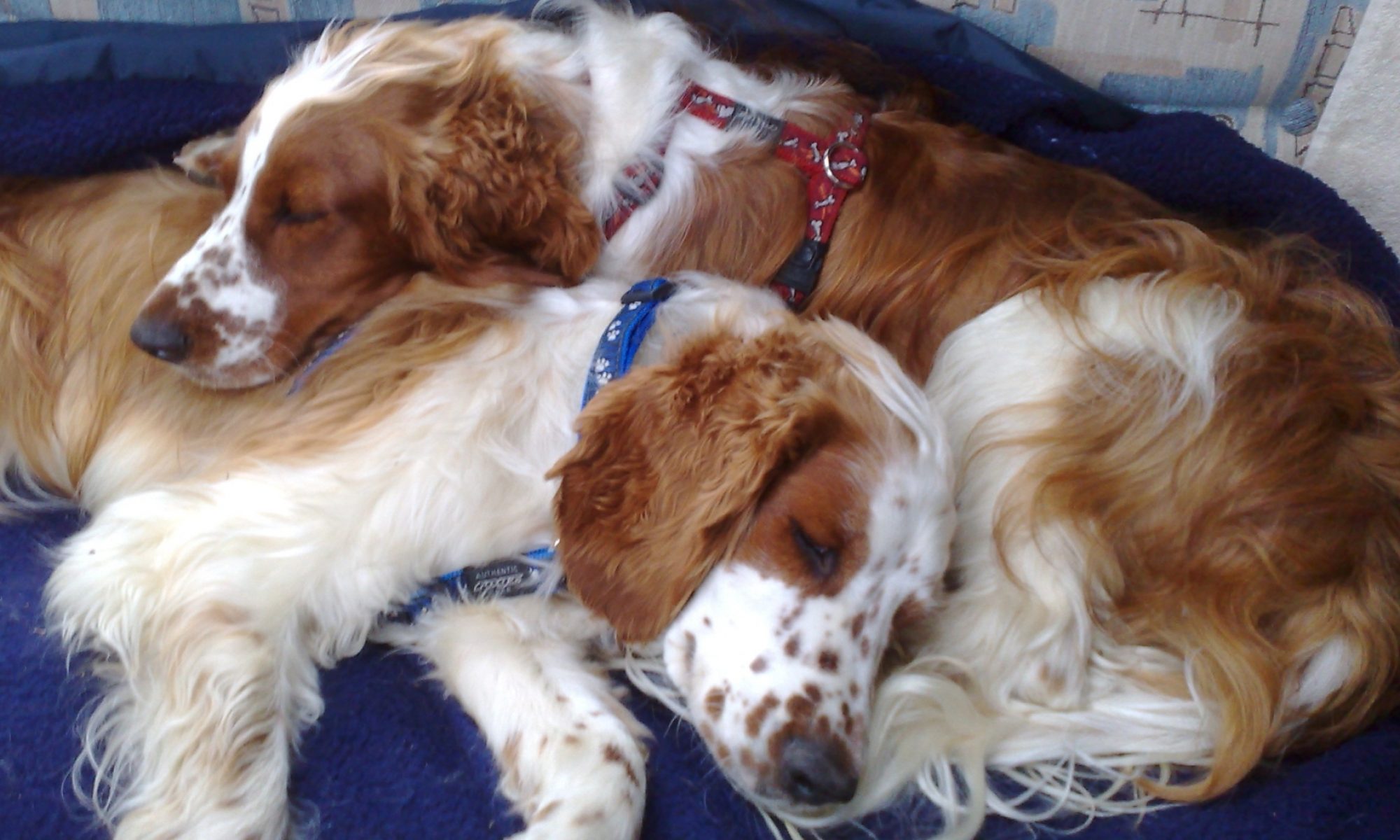The Pituitary Gland

The pituitary gland is a small, oval gland that is attached to the underside or base of the dog’s brain. It is often called the master gland as it controls several other hormone-releasing glands. It is an important link between the nervous system and the endocrine system, and it releases the following hormones:
Growth hormone, stimulating the growth of multiple cells and tissue types.
Prolactin, stimulating milk production after giving birth.
Adrenocorticotropic hormone (ACTH), stimulating the adrenal glands.
Thyroid-stimulating hormone (TSH), stimulating the thyroid gland.
Follicle-stimulating hormone (FSH), stimulating the ovaries and testes.
Luteinizing hormone (LH), stimulating the ovaries and testes.
Melanocyte-stimulating hormone, controlling skin pigmentation or colour.
The pituitary gland is divided into two distinct lobes:
The anterior (front) lobe is called the adenohypophysis. It is subdivided into three regions that produce a variety of hormones. It is controlled by substances called releasing hormones that are transported from the hypothalamus through tiny blood vessels.
The posterior (rear) lobe is called the neurohypophysis. It is controlled by nerve fibres from the hypothalamus. It has two major functions, depending on the hormone produced:
Antidiuretic hormone (ADH) - to regulate water conservation by the kidney
Oxytocin - to stimulate the muscles of the uterus and induce uterine contractions, and encouraging milk to be expressed from the alveoli into the mammary ducts during suckling.
